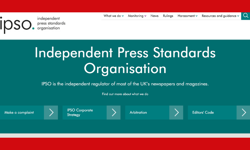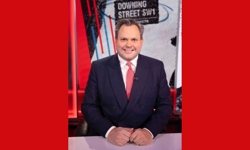If there’s one publisher that understands the changing content wants and consumption behaviours of consumers currently in their late teens and twenties who will make up tomorrow’s mass market, it’s Vice Media. But as the youth media company born of the eponymous print title launches its first broadcast TV channel in the UK, the driving force behind all things Vice remains what it has always been: diverse content, distinctive voice and authenticity.
“It’s all about tone and telling great stories not told elsewhere,” Vice UK editor-in-chief Rebecca Nicholson explains. “If readers are sifting through five versions of the same story via a Facebook feed, then it helps enormously if you are telling your stories in a particular and distinctive way.”
Nicholson joined Vice Media in November 2015 from the Guardian, where she worked as live features editor. She is responsible for Vice.com – the master website that carries almost all of the monthly print magazine’s editorial content as well as its own, and much of the company’s portfolio of nine other themed digital channels including Noisey (exploring youth culture through music); Thump (electronic music); Broadly (women’s interests); and Munchies (food).
Nicholson’s role
Her role bridges content and collaboration between the teams working on each as well as others involved with Vice magazine, whose European managing editor Bruno Bayley sits alongside Nicholson on the Vice.com board; Vice’s international operations – the company currently operates in 30+ countries, including a European network of fully-staffed national offices overseen by EU editorial director Elektra Kotsoni with whom Nicholson closely works; Vice News; and its TV and film division.
Her brief is to build reach among Vice Media’s target 16 to late 20s audience across all platforms in the UK.
“The obvious draw of coming here was, this is a big position and I am relatively young – if I’d stayed somewhere more established, it would have taken longer to get to that point,” Nicholson readily admits. But as important was Vice’s ‘mission’: “I was also fascinated by what Vice was doing. I was already a fan of the website and magazine but, perhaps more important, was Vice’s aim of offering an alternative to what else is out there, and that’s a great thing.”
The audience is young – as is Vice’s workforce, mainly comprising twentysomething whose younger voices are not as well-represented in media generally as they should be, she believes. And the time is perfect. “Increasingly, it feels like we are in a time when fractures in society are happening along age lines. And to have the ability to speak to young people and work with young editors commissioning the stories they want to commission is fascinating … and important,” Nicholson adds.
Improved internal communication was one of her immediate priorities on arrival almost a year ago.
The instigation of a daily cross-platform “mini-morning conference” to discuss ides and approaches as well as assess which stories worked best over the previous 24 hours was an early decision which has enhanced communication and driven closer collaboration between different outlets and editorial teams. “Everything has become slightly more news-y. While there’s still a mix of immediate and less timely content, we can more easily discuss how different channels cover the same story in their own way that’s not duplicating but complementary,” Nicholson says.
Greater diversity was another important ‘to do’. Though the best candidates, a number of recent senior appointments were women and there has been a gradual re-balancing across Vice UK’s previously male-skewed editorial teams. “Opening things up has been another of my priorities. To build our reach, we need to make our channels more accessible, and to achieve that our staff, the writers and their content, need to be more diverse,” she adds.
The Vice approach
Vice outlets’ recent coverage of a number of key topics is indicative of the company’s ethos and ambition.
Take its investigation of the story behind The Sun’s front page story about ‘1 in 5 Brit Muslims’ sympathy for jihadis’. A friend of one staff member worked at the call centre used to conduct the poll on which the newspaper’s story was based. The Vice team’s subsequent investigation rubbished the inflammatory claim by exposing the polling questions as leading.
Or its recent cross-platform week of themed editorial around the issues raised by Chemsex, the Vice Media-produced British documentary about the dangers of an extreme lifestyle courted by a small group of gay men in London – a story widely overlooked by other media.
“What was important for me was the balance and range of voices we featured, including a number of people who tweeted me saying, to draw attention to it somehow demonised the gay community,” Nicholson explains. “So I got them to write about why they felt that and it made the coverage more rounded.”
And then there was Brexit, on which Vice’s take was neatly summed up in a headline accompanying a piece by one of its staff writers that ran on Vice.com the day the Leave campaign won: ‘Oh my god, grandma – what the fuck have you done?’.
“What tied together our coverage was a sense of anger our audience felt about the result and not being able to do anything about it,” she believes. “We’ve never been aligned to any political party or endorsed anyone and would not do so – it’s not how we deal with politics, we don’t work from within the establishment but outside it – but in this case, young people were so overwhelmingly in favour of remaining we had to reflect that and their anger and upset informed the tone.”
Being outside the establishment also helped Vice News secure access to the Labour Party leadership for the film it released in early summer, Jeremy Corbyn: The Outsider, which generated widespread coverage and comment and sparked debate on BBC One’s Newsnight and Radio 4’s Today.
“Our Brexit coverage did very well for us – many of our top stories that month were political, most were about Brexit, and the reason is because what we offer is something different,” Nicholson adds.
“At the time of the referendum, it was widely reported that 36% of 18 to 24s voted prompting a perception many accepted with a roll of the eyes that young people are disinterested. But a proper survey done after showed the figure closer to 68%, because most young people are very politically engaged but not within the framework for traditional politics. And many in the mainstream media overlook this.”
Unique voice
A Vice story stands out. “It has a unique take. It is an alternative,” Nicholson believes. “And as most of Vice’s target audience consume news through their Facebook feed, which makes it hard to spot something different as so much content feels so same-y these days, that’s key.”
But content distribution strategy is also important.
You’ve got to deliver your content how and where the audience wants it, which means across Vice’s numerous own platforms as well as pushing the content to where the audience is via third parties, including YouTube and – increasingly – Snapchat, she points out. This is an approach many content publishers now pursue, of course. Even so, authenticity remains a stumbling block for many. Others may aspire to appeal to younger audiences, but doing so naturally rather than as a business decision made retrospectively lends Vice an advantage.
“It’s inherent here, not contrived. And it works because it’s about young people speaking to their peers,” Nicholson believes. “You’ve got to understand the audience, but as important you’ve got to respect their intelligence.”
Vice magazine: still important
With the roll out across 44+ countries of Viceland, Vice’s first 24 hour broadcast TV channel which went live in the US earlier this year and launched in the UK on Sky and Now TV in September, you could be forgiven for thinking the ongoing publication of the print magazine that began it all and has a current global circulation of just over one million is, well, a bit of an anachronism.
Vice Media now distributes its content to hundreds of millions of people each month across digital, linear, mobile, film and social media, after all. It employs 2,200 people worldwide. And it was recently reported to be forecasting £100m revenues and £18m profits this year – just from its European operation.
Yet the magazine still plays an important role as the company gets bigger in keeping Vice content true to its roots.
Sure, in its early days back in the mid-1990s, Vice magazine’s abrasive edge and passion for the furthest extremes of youth culture could be – and sometimes felt, at times, intentionally – alienating, Nicholson admits. But it evolved, and did so without compromising its commitment to the youth agenda, strengthening and deepening its coverage through building an international infrastructure capable of delivering a global / local content mix while adhering to the single-minded clear-eyed journalistic pursuit of bigger, better stories relevant to its audience yet under-reported or untold by everyone else.
“Magazines do the stuff print can do that online can’t. The quality of the physical product can enhance the power of an incredible photo story and the editorial mix – where one page you can read a new short story by Joyce Carol Oates then an excerpt from the new Daniel Clowes graphic novel the next – makes it unique,” Nicholson says.
“It’s partly to do with a magazine not having to respond to the daily news cycle, something to do with its ability to offer a broader overview of the world at that particular moment in time. And it also sets a bar to which everyone involved in creating stories across other parts of the business aspire.”
The quality of the magazine – its editorial, its design, its production values – is unquestionable. “And when you actually read the stories and see the end result,” she insists, “I firmly believe that no-one can accuse Vice magazine of being alienating anymore.” Not unless you are part of the establishment, perhaps – which the title and all of its associated platforms and channels pride themselves on being outside. At which Nicholson grins.
“Though you can alienate the establishment. For us that’s not a problem,” she adds.












